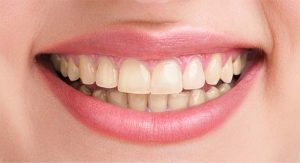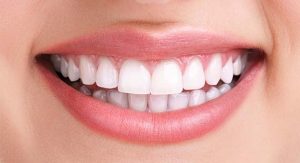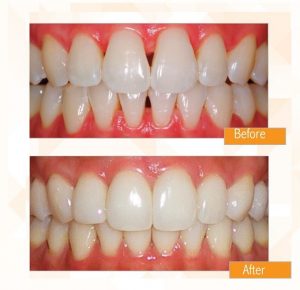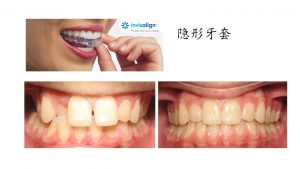Cosmetic Dentistry




Tooth whitening is a cosmetic dentistry procedure that lightens teeth and helps to remove stains and discoloration. It is the most popular treatment by both men and women alike and the treatments available range from one-hour one-time dental visits to take-home do-it-yourself kits. Tooth whitening is popular because it can significantly improve the appearance of your teeth at much less cost and inconvenience than other techniques.
Yellow or stained teeth are a common problem most Americans will develop at some point in their lives but can remedy with proper treatment. Our teeth contain enamel, a porcelain-like surface that started out sparkling white. Tooth enamel is designed to protect the teeth from the effects of chewing, gnashing, trauma and acid attacks caused by sugar. Over time, our enamel starts to hold stains within its pores and becomes more transparent and permits the yellow color of dentin, the tooth’s core material, to show through. As more stains and debris accumulate because of normal wear and tear and eating habits, the teeth develop a dull, lackluster appearance. Tooth whitening exists to remove the stains and debris associated with diet and aging.
 About a third of all adults share one common complaint about their smiles: black triangles. Black triangles occur between the bases of teeth. Although some people have always had black triangles, they tend to increase with age. Unfortunately, closing black triangles has been a challenging problem in cosmetic dentistry. Porcelain veneers can be used to close black triangles, but they require removal of tooth material and can be expensive. Dental bonding can do it, too, but it’s more challenging, less durable, and more prone to staining.
About a third of all adults share one common complaint about their smiles: black triangles. Black triangles occur between the bases of teeth. Although some people have always had black triangles, they tend to increase with age. Unfortunately, closing black triangles has been a challenging problem in cosmetic dentistry. Porcelain veneers can be used to close black triangles, but they require removal of tooth material and can be expensive. Dental bonding can do it, too, but it’s more challenging, less durable, and more prone to staining.
But now BioClear gives us a great approach to closing black triangles that is cost effective, durable, and attractive. It can also be used for other types of tooth reshaping.
CAUSES OF BLACK TRIANGLES
As we noted above, black triangles are a common cosmetic complaint, affecting about a third of all American adults.They are so common because they can be traced back to a number of causes.
First, many people have black triangles around their teeth because that’s how their teeth are shaped. If your teeth have wide crowns but narrow roots, there is going to be a significant taper from the point where your teeth touch down the gums. Your gums may not fill all this space.
Teeth erosion can also lead to black triangles. The consumption of acidic foods and beverages as well as purging behavior related to bulimia nervosa, can cause your teeth to be worn away, which can cause the formation of black triangles.
But gum recession is probably the most common cause of black triangles. For many people, gums initially fill in the space between their teeth, but the thinnest, uppermost part of the gums, called the papillae, are vulnerable to damage and can recede. The most common cause of gum recession is gum disease, which affects two-thirds or more of American adults. Other causes of gum recession include aggressive toothbrushing or flossing, acid damage, and tongue, lip, and cheek piercings.
THE EFFECTS OF BLACK TRIANGLES
Black triangles are mostly known for their cosmetic effect. They draw the eye and make the smile look darker and less healthy. People will know (or assume) that you have been affected by gum disease.
But black triangles can also impact your oral health. These spaces at your gum line tend to trap food and foster the growth of oral bacteria. They’re also hard to clean, since brushing doesn’t get in there well, and flossing may not clean the space thoroughly. Aggressive cleaning may even speed gum recession.
HOW BIOCLEAR WORKS
We may begin the bioclear process by removing some tooth enamel, depending on the shape we’re trying to achieve, but it’s much less than is necessary for porcelain veneers, and in many cases all that’s necessary is a little roughing to make it easier for the material to stick to the tooth. Then we will enfold the tooth in thin sheet of clear mylar. This allows us to precisely shape the restoration. I t can cling to the tooth and even slide below the gum line, making for a natural-looking shape and complete restoration.What makes BioClear ideal for treating black triangles? BioClear uses a flowable composite. It’s a material basically like dental bonding, but it’s heated so that it flows into the space around it. This makes it easy to get down under the teeth, where it’s hard to apply dental bonding.
Once we have achieved the shape we desire, we will pour in the flowable composite. This is warmed to allow it to flow properly, but it won’t feel hot to you–the composite is an insulator and doesn’t pass heat on readily. The flowable composite will fill the entire mold, leaving no voids and creating a smooth surface that makes the restoration durable and stain-resistant.
Once the composite is cooled and hardened, we will shape and polish it.
ADVANTAGES OF BIOCLEAR
BioClear hasn’t been around very long, but it is growing rapidly in popularity because it provides a great restoration option. BioClear:
- Is great for closing black triangles
- Is highly stain resistant
- Is very durable
- Easy to repair if damaged
- Can be completed in a single visit
- Low impact on gum tissue
- Less expensive than porcelain veneers
For all these reasons, everyone should consider BioClear when looking to reshape their teeth.

Invisalign is a clear orthodontic appliance offered as an alternative to the metal and brackets of traditional braces. The plastic aligners that perform the treatment are intended for people who want to keep a mature appearance as they straighten their teeth. The product was first introduced in 1999 by Align Technologies of Santa Clara, California. Invisalign is perhaps the most popular traditional braces alternative due to the effectiveness of the product and its proven use in clinical studies and by dentists and orthodontists alike.
How Invisalign Works
Invisalign uses a custom-made series of aligners that are made for the patient. The orthodontist first takes an impression and photographs of the teeth during the initial consultation. The results are sent to the Invisalign factory and used to create a three-dimensional computer projection of how the teeth could be moved incrementally, forming the basis for developing a series of custom-made aligners designed to accomplish this movement. Once the treatment plan provided by Invisalign is approved, a plastic resin aligner is manufactured for each stage of the computer simulation and shipped to the orthodontist.
After the aligners are sent back to the orthodontist, he/she will dispense them to the patient as each treatment phase is successfully completed and to monitor the progress. The aligners must be worn in specific order for about two weeks, during which time they move the teeth in small increments of about .25 millimeters to .33 millimeters. Wearing the aligners will gradually and gently shift teeth into place, based on the exact movement the orthodontist has planned out.
The average treatment time for Invisalign is about one year, provided the patient wears the aligners the recommended 20 to 22 hours a day. Treatment times may be longer if a more complex treatment is necessary. Typically a patient will go through 20 to 30 aligners for both the upper and lower teeth before they get the results that both they and their orthodontist are happy with.
Treatable Cases
Invisalign was created for teenagers and adults with all their adult teeth who can faithfully follow a treatment plan provided by their orthodontist. Any variance on this prescribed plan may compromise treatment success. According to the Invisalign website, the aligners can be used to correct the following dental concerns:
Spaced Teeth– Excess teeth spacing occurs with abnormal continued growth of the jaw bone. Often times missing teeth can cause the surrounding teeth to shift due to extra space. Spaced teeth can lead to gum problems (due to lack of protection by the teeth), periodontal pockets and increased risk of periodontal disease.
Overly Crowded Teeth– Crowded teeth occur when there is a lack of room within your jaw for all of your teeth to fit normally. If left untreated, overly crowded teeth can get worse over time. Crowded teeth can lead to plaque accumulation, tooth decay and an increased chance of gum disease.
Crossbite– Crossbite occurs when the upper and lower jaws are both misaligned. It causes one or more upper teeth to bite on the inside of the lower teeth, and can happen on both the front and the sides of the mouth. This can potentially lead to abnormal tooth wear and chipping, and periodontal problems including gum disease and bone loss.
Underbite– Underbite occurs when the lower teeth protrude past the front teeth. It is often caused by undergrowth of the upper jaw, overgrowth of the lower jaw, or both. Sometimes it can be caused by missing upper teeth which can prevent the normal function of front teeth or molars, and can lead to tooth wear. It can also cause painful jaw and joint problems.
Overbite– Overbite occurs when the upper teeth bite over the lower teeth. It’s commonly caused by genetics, bad oral habits, or over development of the bone that supports the teeth. Overbite can lead to gum disease and chipped or fractured front teeth.
Dental veneers are custom-made ultra-thin shells of tooth colored materials designed to cover the front surface of teeth to improve your appearance. The veneers are bonded adhesively to the front of the tooth to fix the look of teeth that are chipped, discolored, misaligned, uneven, worn down, or abnormally spaced. Veneers are a cosmetic dentistry procedure that creates a bright, white smile with beautifully aligned, shapely teeth. Veneers are constructed of porcelain or from resin composite materials. Porcelain veneers are thought to be more natural looking as they better mimic the light reflecting properties of natural teeth and are known for their abilities to resist stains.
Dental veneers can make most issues concerning unattractive teeth better, including:
- Worn enamel
- Chipped/cracked teeth
- Unevenly spaced teeth
- Discoloured teeth
- Misshapen teeth
- Faster alternative to braces
Your dentist will be able to help you decide which choice is right for your particular needs.
Tooth bonding is the application of a tooth-colored resin material using adhesives and a high intensity curing light. The procedure gets its name because materials are bonded to the tooth. Bonding is typically used for cosmetic purposes to improve the appearance of a discolored or chipped tooth. It is also used to close spaces between teeth, to make teeth look longer or to change the shape or color of teeth. Often times bonding is used as a cosmetic alternative to amalgam fillings, or to protect a portion of the tooth’s root that has been exposed when gums recede.
Dental bonding can be considered to fix the following dental issues:
- To repair decayed teeth (composite resins are used to fill cavities)
• To repair chipped or cracked teeth
• To improve the appearance of discolored teeth
• To close spaces between teeth
• To make teeth look longer
• To change the shape of teeth
• As a cosmetic alternative to amalgam fillings
• To protect a portion of the tooth’s root that has been exposed when gums recede
Pros and Cons of Dental Bonding
Pros- Dental bonding is one of the most common and least expensive of cosmetic dentistry procedures. It can usually be done in one short office visit unless multiple teeth are involved. Another advantage to bonding is that compared to veneers and crowns, it requires little to no removal of tooth enamel. Most procedures involving dental bonding do not require anesthesia.
Cons- The material used in dental bonding is not as strong as your real teeth, so biting on fingernails or chewing on pens can actually chip the material. Bonding only lasts a few years before it needs to be repaired and is not as strong as other restorative procedures, such as crowns, veneers, or fillings. It is also not as stain resistant as crowns.
Because there are some limitations to the restorative impacts that bonding can have, some dentists may view it as best suited for small cosmetic changes, for temporary correction of cosmetic defects, and for correction of teeth in areas of very low bite pressure (for example, front teeth). Your dentist will be able to tell you if bonding is right for you or may make other recommendations relative to your personal conditions.
Teeth Bonding Consultation
A consultation with your dentist will determine what dental problems can be solved with bonding. Your dentist will conduct a thorough examination of your teeth that may involve x-rays and an evaluation of your teeth and gums. During your consultation, your dentist will discuss if you are a candidate for the cosmetic problems that bonding can resolve, such as decayed teeth, cracked or chipped teeth, gaps, tooth discoloration, “short teeth,” and more. If you have teeth that are extensively damaged your dentist may recommend other restorative or cosmetic procedures that meet more long-term goals.
Caring for Bonded Teeth
Bonded teeth require the same care as your natural teeth. The care necessary to maintain a healthy and beautiful smile is to keep good oral hygiene habits. Brushing at least twice a day and flossing are good ways to keep good oral health. Routine check-ups as recommended by your dentist should ensure clean teeth and a healthy smile.Because the material used in bonding can chip, try to avoid biting on hard objects that may cause damage. Biting your fingernails, chewing on pens, ice or other hard food objects should be avoided. If the tooth feels differently than when you had your procedure, you may have chipped the bond. Consult your dentist if this happens.
Teeth Bonding Cost
Costs of dental bonding vary depending on your specific dental conditions, amount of teeth that need cosmetic repair, additional procedures performed in conjunction, and the dentist performing the operation. On average a dental bonding procedure can cost between $100 to $400 per tooth. Check with your dental insurance provider to see if you are eligible for coverage.
